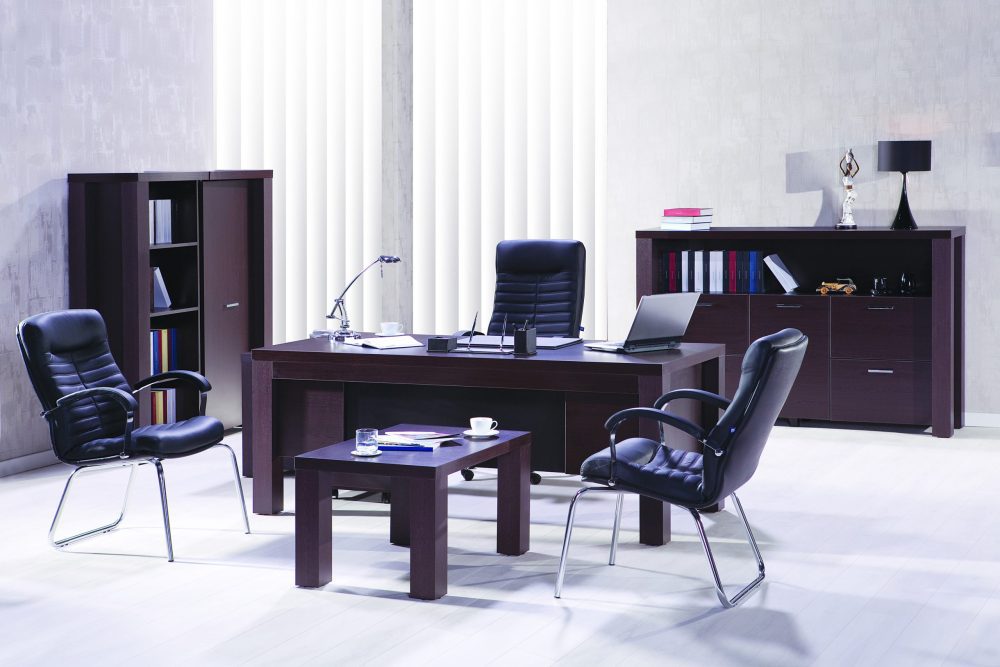The world outlook for office furniture

According to the CSIL report ‘The world office furniture industry’ (December 2021 edition), the global production of office furniture reached a value of US$ 52 billion in 2021.
Office furniture is a mature sector representing around 10% of total world furniture output. Asia-Pacific is the main manufacturing area with a 52% share of world office furniture production (in-depth analysis of the area is provided in the CSIL report ‘The office furniture market in Asia Pacific and China’, November 2021), followed by North America, accounting for 24%. Europe ranks third with an incidence of 19% of the worldwide output. The other geographical areas hold marginal shares.
The production of office furniture is highly concentrated in 8 countries, which account for around 78% of the total output: China, the United States, Japan, Germany, India, Canada, Italy, and Poland.
Production of office furniture dropped by -10% in 2020 due to the consequences of the Covid-19 pandemic and showed a +10% rebound at current prices in 2021. Recovery of the world office furniture production has been different across regions.
Asia and Pacific and Europe have been increasing over the average, whereas North America grew by only 3%. In this regard, attention should be given to the currency issue. All data are in US dollars and obviously affected by the exchange rate fluctuations. Another factor to be considered is inflation since prices are generally growing worldwide and they affect the performance of each country.
CIRCULAR MODELS TO EMERGE IN THE OFFICE FURNITURE BUSINESS
The use of recycled materials is more and more frequently reported in office furniture companies’ communication. However, it is worth considering that the evolution towards circularity requires efforts across the entire value chain and cannot be limited to furniture producers only, since it involves product designers / editors, furniture producers / assemblers, distributors / retailers, and architects / interior designers.
Product design plays a pivotal role. Nowadays, products can be designed to be easily disassembled or to make it easy to substitute specific parts, or that include recycled and/or recyclable components and raw materials.
A major example in the furniture industry is represented by the processing of wood-based panels made from recycled wood. Within the course of the current year, the market of wood-based panels will see a significant introduction of MDF panels produced from recycled wood.
The introduction of components made from recycled plastics (recycled PET bottles are often used for this aim) is a valid option for furniture manufacturers. Recycled PET is a widespread option for acoustic panels in Europe and worldwide. Recycled plastics are also used for office chairs seats and/or back.
These solutions have been developed by the industry, especially among Scandinavian office and contract furniture producers. However, they still look like niche products. Circular models based on repair, re-manufacturing, and reuse schemes already exist in the furniture sector and Scandinavia leads the way.
Reuse mainly occurs in commercial second-hand shops, social enterprise companies, or charities. When reuse is offered by manufacturers, it is common for them to partner with charity organizations. Overall, the reuse market is small in the furniture sector, especially if compared to other consumer goods.
New business models, based on the leasing formula (pay-per-service model instead of buying products) can entail some remanufacturing and refurbishing once the furniture is returned from the lease. The percentage of recyclable products on office furniture portfolios has been increasing over the last few years.
According to a survey conducted by CSIL in November 2021 on a sample of around 80 office furniture manufacturers, “totally recyclable” products represent 32% of office total furniture supply on average, while “partially recyclable” products cover a 45%, and “non-recyclable” products still represent 23% of the total.
SUPPLY CHAIN DISRUPTIONS
The pandemic has caused both demand and offer shock, affecting at the same time furniture production and consumption. The lockdown policies and their different length have varied across countries and segments of production. This impacted the furniture business with different degrees of intensity.
Supply chain disruptions, which started last year, are continuing in the current year. Shutdowns in production facilities and restrictions in retail have occurred in 2021 and are still occurring in 2022 in some regions/countries.
Difficulties in sourcing production inputs such as labour, raw materials, components (both domestically produced or coming from abroad), accessing the markets (store closures), and in delivering goods (congested logistics, global shortages of shipping containers) have been affecting the sector.
Diversifying industry suppliers may occur, not relying on single suppliers, but finding new ways to make use of components that can be sourced from lots of different locations. Among the consequences of the raw materials increasing quotations and the general turbulence of logistic costs there is the growth of list prices.
List prices are on the rise, according to the CSIL survey. About 90% of respondents declared to have increased their list prices in 2021. Most of them declared a price growth ranging between 5% and 10%, while a similar share was quoted when asking about expectations of price increase in 2022.
Sources:
- The world office furniture industry, December 2021
- The office furniture market in Asia Pacific and China, November 2021
- The European market for office furniture, June 2021
The full article was issued on CSIL review ‘World Furniture’ #93 March 2022. Browse the last release at https://worldfurnitureonline.com/research-market/world-furniture-international-markets-review-4-issues-0058636.html
Photo credit: Kit Out My Office, CC BY-SA 4.0 via Wikimedia Commons